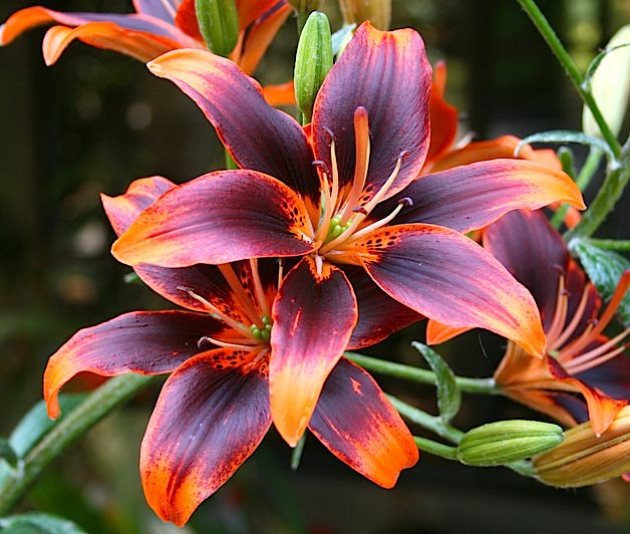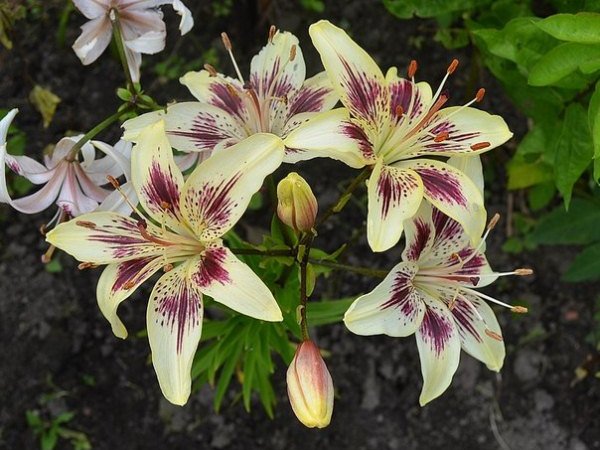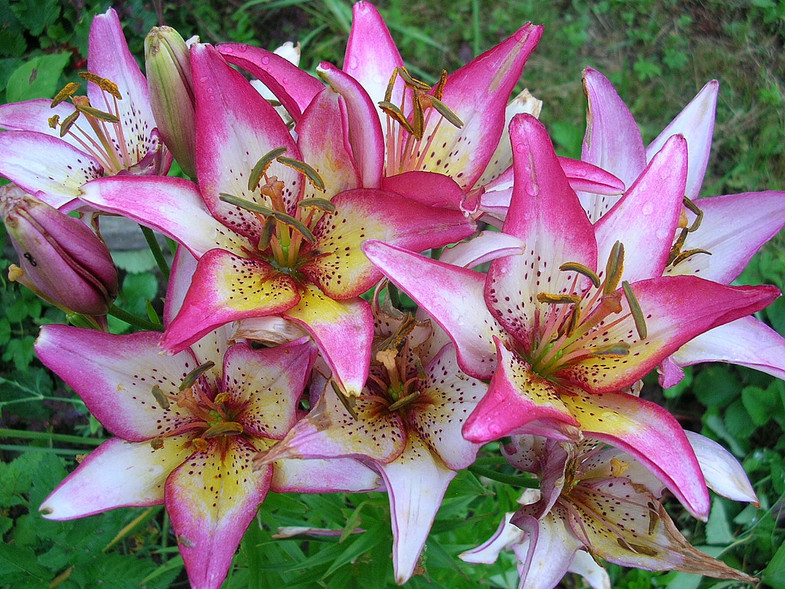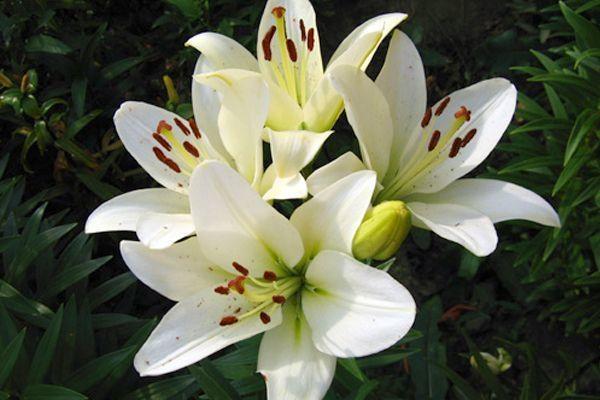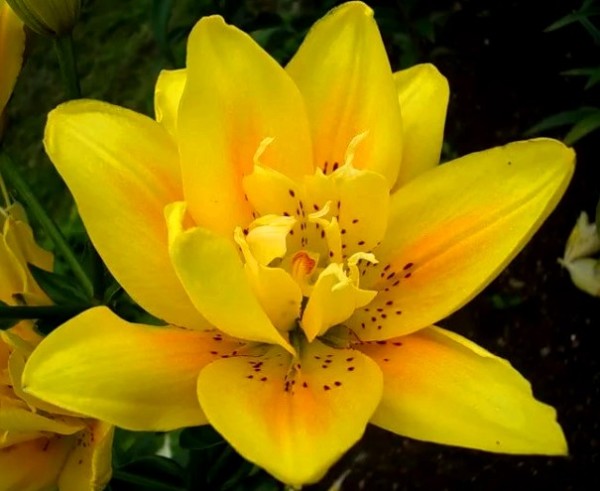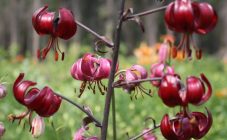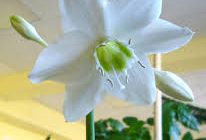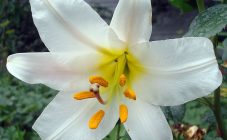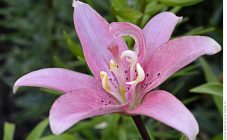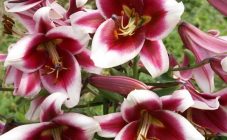Content:
Asian hybrids of lilies are the most unpretentious in their care. Each grower will find the most suitable flower color for himself. Asiatic lily has a large number of varieties that are combined into several groups. Readers will be interested to learn about the features of caring for these beautiful plants.
About lily
Asian hybrids of lilies began to spread from the middle of the twentieth century. Initially, red and orange flowers were bred. However, further crossing with lily species containing special substances - flavonoids, made it possible to breed Asians of almost all the colors that exist in nature.
Modern breeders are working to create two - and three-color flowers. All of them grow successfully on any soil. Now very beautiful varieties with double flowers have been bred, such as Aphrodite, Tango, Navona, Sphinx, Fata Morgana, Night rider. There are potted varieties that allow you to grow beautiful flowers at home.
Plant characteristic
Description varieties allows you to highlight such its characteristic features:
- The height of the plant can reach 1.5 m in some specimens.
- The aroma of flowers is intense, with tart notes.
- Flowers can have different shapes: star-shaped, cup-shaped, turban-shaped, funnel-shaped, goblet-shaped.
- The flower usually has 6 petals, although there are varieties where their number is greater. The length of each petal is 10 cm.
- The number of flowers on one stem is at least 5.
- Blooms throughout July-August.
- Bulbs can withstand temperatures up to 25 ° C frost.
Characteristics of species and varieties
Asiatic lilies are distinguished by a wide variety of flower colors. Even the most fastidious flower lover will certainly find something suitable for himself. All varieties of varieties are divided into groups.
Brashmark
These lilies have a smear on each of the perianth leaves. Its shape and color are very diverse. There are even dark purple and plum shades. The most notable varieties:
- Elijah is a creamy flower with a dark spot in the middle;
- Vanguard - golden orange flower with a red spot;
- Rostani - apricot flower with a dark spot in the middle;
- Zhuravinka (red);
- Delta is a yellow flower with a surprisingly long flowering period.
Bicolor varieties
This is a conditional division, because often lilies have just an infinite number of shades on one flower. The widespread variety Asennyaya Farby is a red lily with an orange center, Sorbet is pink and white, Grand Cru is yellow with a bright red spot, and it is located at the very base of the petal.
Tango
This is a very beautiful variety of terry lilies. They are like a real work of art: they have a dense speck in the center of a flower of bright color. The combination of shades of Lily tango is amazing. Tango Grafiti is perhaps the most unusual combination of burgundy burgundy speck and bright yellow flower. Other varieties of the variety:
- Dot Com - pink with burgundy speck
- Kentucky - bright orange with burgundy splashes
- Heart balance - beige with maroon speck
- Lion heart - deep purple with bright lemon petal tips
- Strawberry and cream - white with purple specks.
Navona
Lily Navona has dazzling white petals. The second feature of the variety is its large petal size. The plant can exceed a meter in height.
When planting the Asiatic Navona lily, you need to make sure that the place where it will grow is sunny. So the plant will be tall and give a surprisingly white flower.
Fata Morgana
These double flowers will become a real decoration of a garden or flower garden. Lily Fata morgana has an original structure: 12 petals, which are covered with dense specks. The flower is very fluffy, sometimes it is difficult to see the lily in it. The shade is bright yellow.
This terry lily can be grown specifically to create very beautiful bouquets. She has a very subtle scent. If you cut the flower correctly and take care of the bouquet, it will delight your eyes for up to 2 weeks.
Gold Lode
This is a truly unique plant variety because it has a large inflorescence of 22 beautiful flowers. Thus, one plant will replace a nice large bouquet. Differs in a beautiful bright yellow shade of the flower.
Planting and leaving
Plants can be grown in the same location for up to 4 years. By the 5th year, the plant height and the number of buds are markedly reduced due to the exhaustion and weakening of the bulb. This leads to disease and death of the lily. This means that the bulbs must be dug up, carefully divided among themselves and transplanted to a new place. No bulbous plants need to be grown in the old place for another two years.
Newly purchased bulbs should be planted as soon as possible. If this cannot be done, then they should be stored at a temperature of about zero. They need to be wrapped in moss or placed in coarse river sand.
Before planting, dry parts of the bulb and roots must be removed. The optimal time for planting in open ground is early October or late April. Planting depth - up to 20 cm from the bottom and soil level. Its acidity should be in the range of 6-6.5. Composition - loam, peat, humus. Sand must be added under the bottom and around the bulb.
Lily needs to be mulched. Bark, dry needles, straw, fallen leaves are used as mulch. The thickness of the mulch is at least 5 cm.
During the period of bud formation and at the staining stage, you need to do top dressing. It is not recommended to give excess nitrogen fertilizers and humus. During flowering, you should not fertilize the plant, as this will lead to the fact that it will quickly fade. Potash fertilizers must be applied no later than August 15, which will support the depleted bulb and prepare it for winter.
Diseases and pests
Lilies are sometimes affected by a fungal disease called botrytis. The risk of this disease increases in cold and wet weather. In diseased plants, leaves are affected: they are covered with red spots, spreading to the flower and buds. To prevent botrytis, you do not need to excessively moisten the soil. It is necessary to add lilies with a solution of copper sulfate (1 tablespoon per 5 liters), to which ammonia and soda ash are added to a tablespoon. Be sure to add a solution of copper sulfate to the ammonia solution.
Botrytis needs to be treated by spraying the leaves with a Bordeaux liquid solution.
Rot of the bottom of the bulb appears due to the use of fresh manure or lack of watering. The bulbs must be dug up, washed and kept for half an hour in the foundation.
Asian varieties of lilies are striking in their diversity and beauty. Caring for a plant is not difficult - even a novice florist can handle it. Lilies bloom for a long time and delight the eyes with their unusual shapes.
